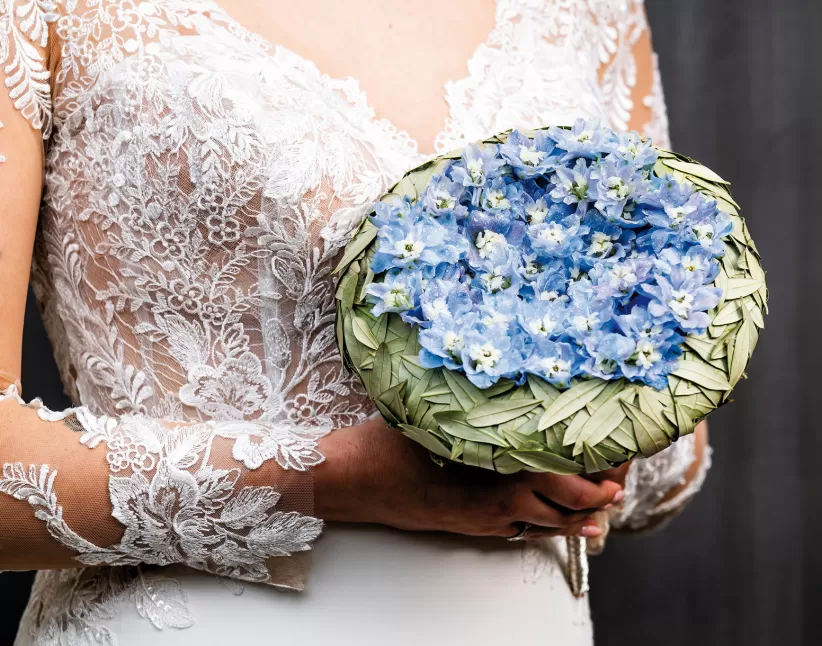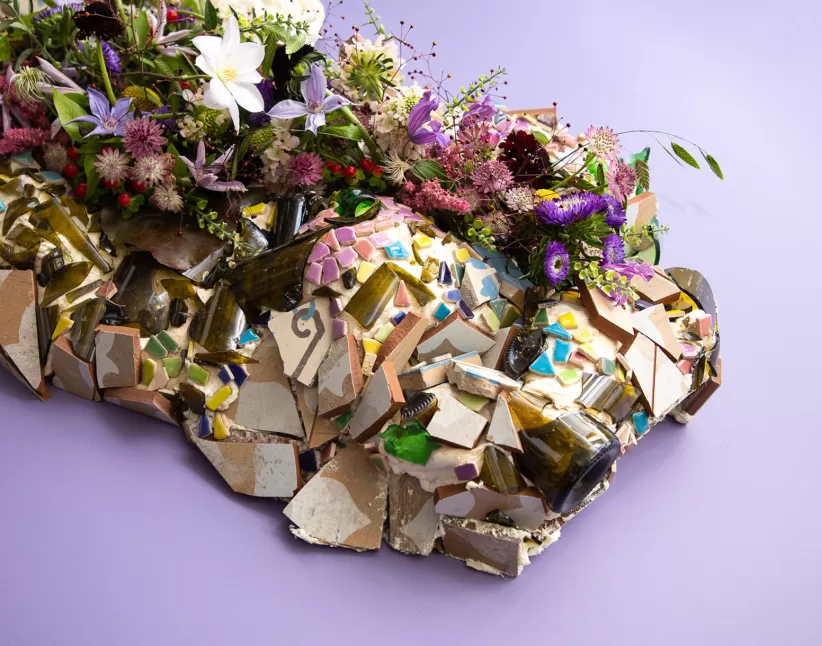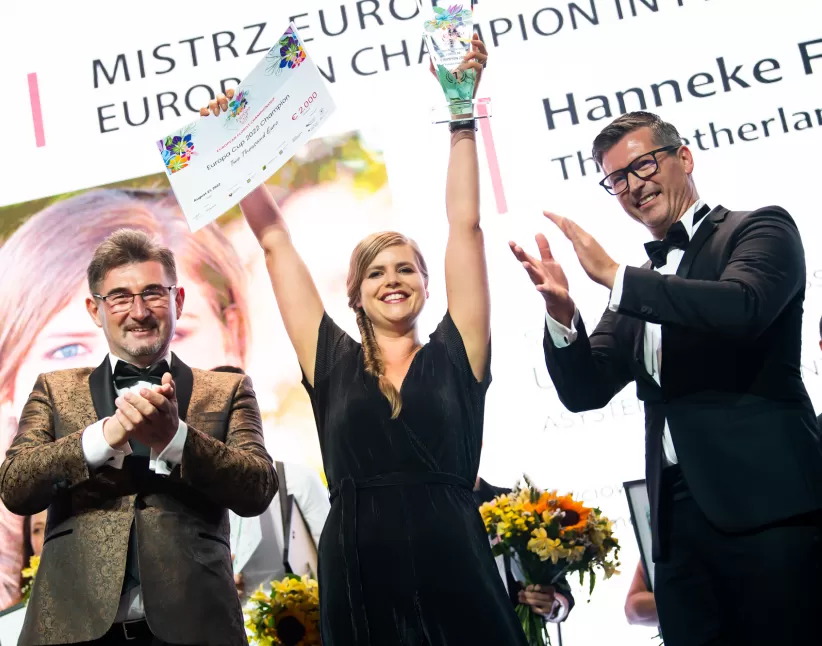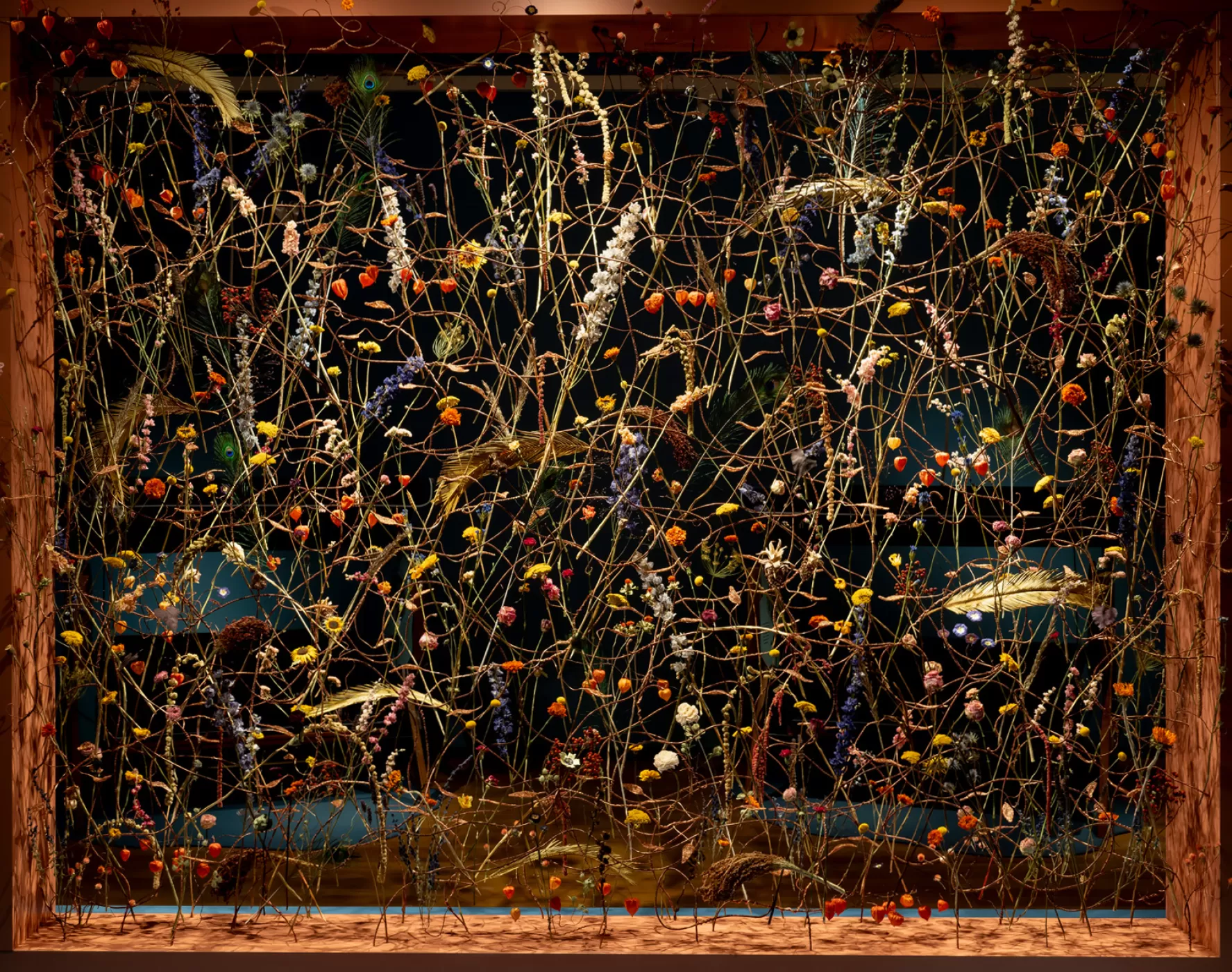
17th century flowers at Paleis ‘t Loo
View Hanneke Frankema's floral still life at exhibition 'Bloom'.
Back to storiesRoyal flowers
What made the Pineapple Flower popular in the 17th century? How do you dry delicate flowers while optimally preserving their colour? And how does it feel to work at a historic location where kings and queens used to stroll down the hallways? Hanneke Frankema told us everything about her artwork 'Rearranged', which she worked on in the exhibition space for over two weeks.
Bloom exhibition
Princess Mary II, who lived from 1662 to 1695, is the inspiration for the 'Bloom' exhibition at Paleis ’t Loo. Princess Mary and her husband, Dutch stadtholder and Prince of Orange William III, commissioned the construction of Paleis ’t Loo in 1684. The palace’s location, at a low point in the middle of the Veluwe, was ideal for creating a beautiful garden. The English princess, who later became Queen of England, had a great passion for flowers and plants and popularised the export of flowers in the 17th century.
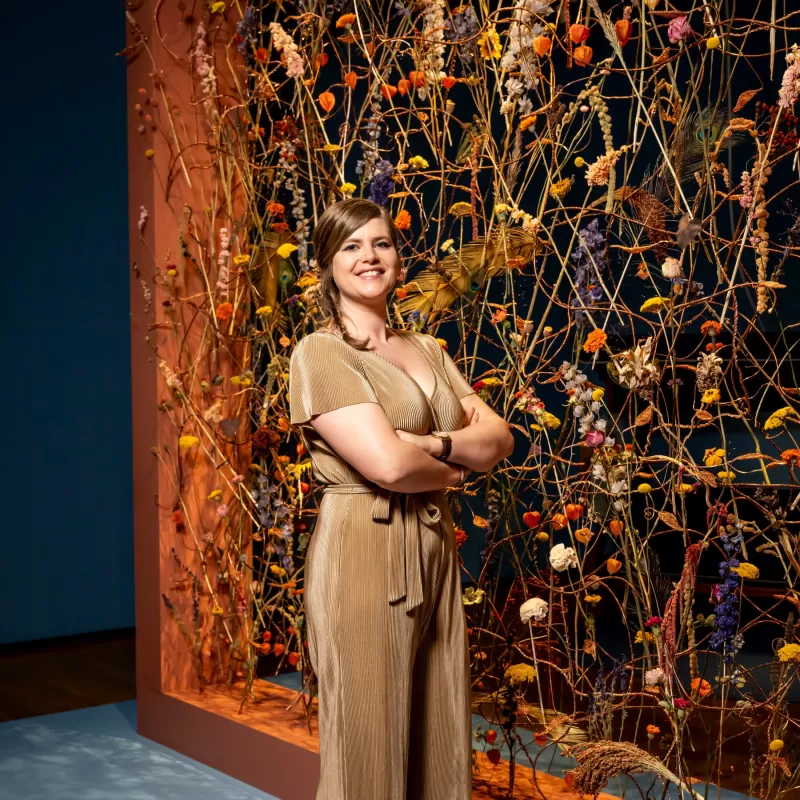
About Hanneke Frankema
Since Hanneke Frankema earned the title of Master Florist, at the time as the youngest florist ever, her career has skyrocketed. With her impressive designs and unique style, she won numerous national and international awards. She was the Dutch Champion in 2018 and the European Champion in 2022. Hanneke travels the world for shows and to teach masterclasses. Her style is characterised by great precision and innovative techniques with aluminium wire.
Flowers frozen in time
All the flowers Hanneke used in her work ‘Rearranged’ existed during the time of Princess Mary II. Most of the flowers were even picked from the garden of Paleis ’t Loo itself. “For half a year, volunteers cut everything from the garden that they thought would dry well and existed in the 17th century”, says Hanneke. The collected flowers and plants were dried in the attic of Paleis 't Loo. The drying process went very well. Even varieties Hanneke didn’t expect to dry well, were preserved successfully.
Hanneke used a few Pineapple Flowers in her work. During the project, she learned the special history behind this flower. Hanneke says: “I only had three of them. I thought, it's a pity you don’t have more. Then a conservator told me: that’s actually good because it was very unique and expensive at the time.” Pineapple Flowers were so rare in the 17th century that they were viewed as a symbol of high social status. They were lent out among the upper classes for important dinners to show off their wealth. Other flowers from the garden of ’t Loo that were cut for the artwork include Dwarf Morning Glory which is known as 'Prince Flower' in Dutch, Marigold, Sunflower, Nasturtium, and Hibiscus.
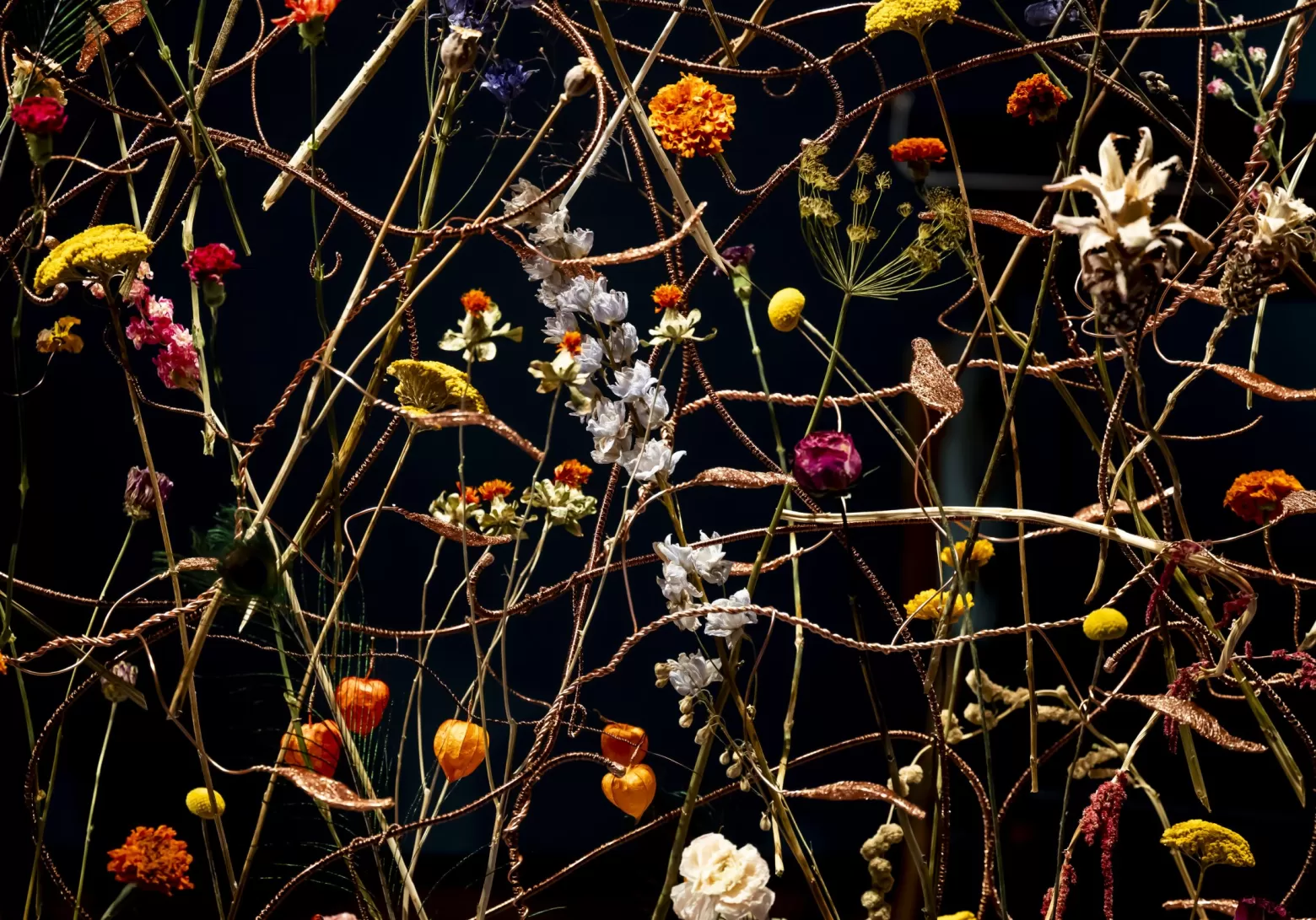
A challenging assignment
Throughout her career, Hanneke has mainly worked with fresh flowers. So, executing a project of this scale with solely dried flowers was quite a challenge. Some flowers, such as Dwarf Morning Glory and Nasturtium, were so fragile that Hanneke created a structure with wire to support them. The dried petals of the Hibiscus flower were as thin as the wing of a butterfly. So to be able to use them, she glued petals from several flowers together to create a new slightly sturdier flower.
The garden conservator of Paleis ’t Loo closely monitored that all the flowers Hanneke used, existed in the 17th century. Some flowers were very difficult to obtain. Therefore, Marginpar also supplied some flowers such as Craspedia Paintball™ Pop, Limonium, Delphinium, and Talinum 'Long John'. Craspedia is a well-known dried flower and dries very easily. The round yellow flowers were important to add colour to the work. Talinum looks very delicate but remains quite sturdy after drying. Campanula, a flower also available from Marginpar, proved very suitable for drying as well.
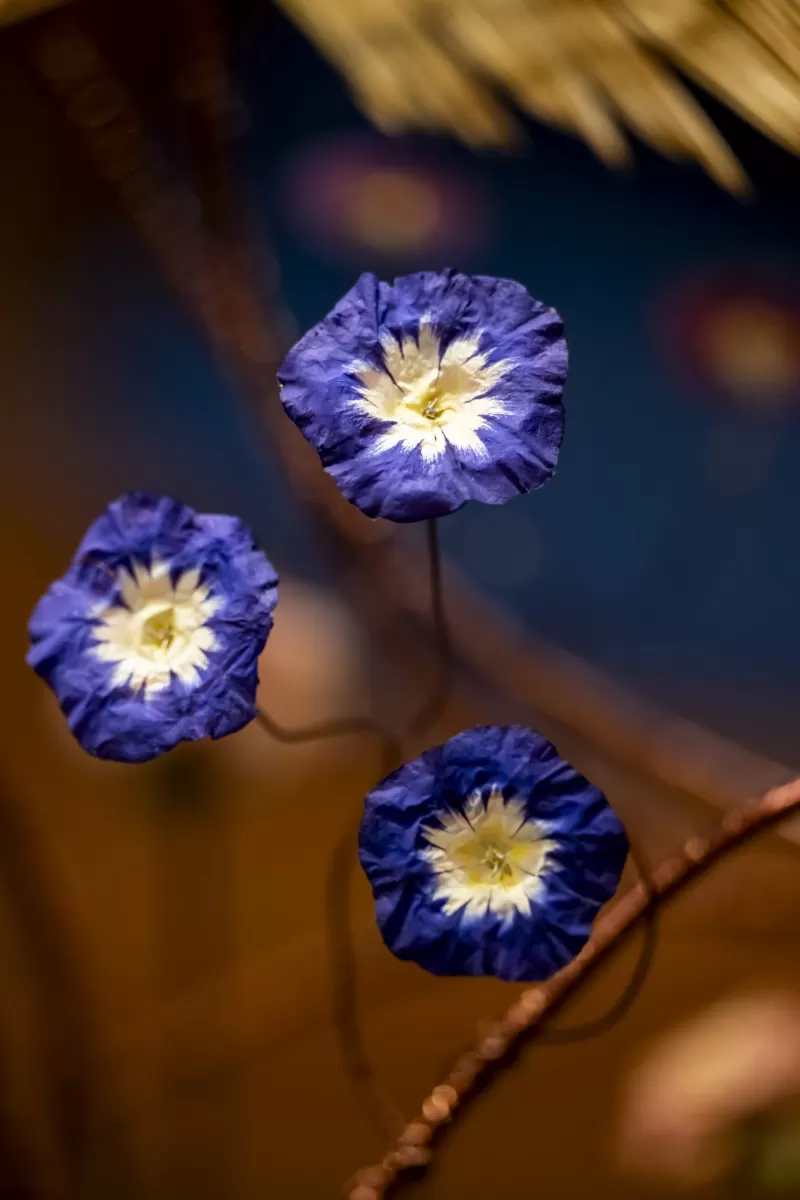
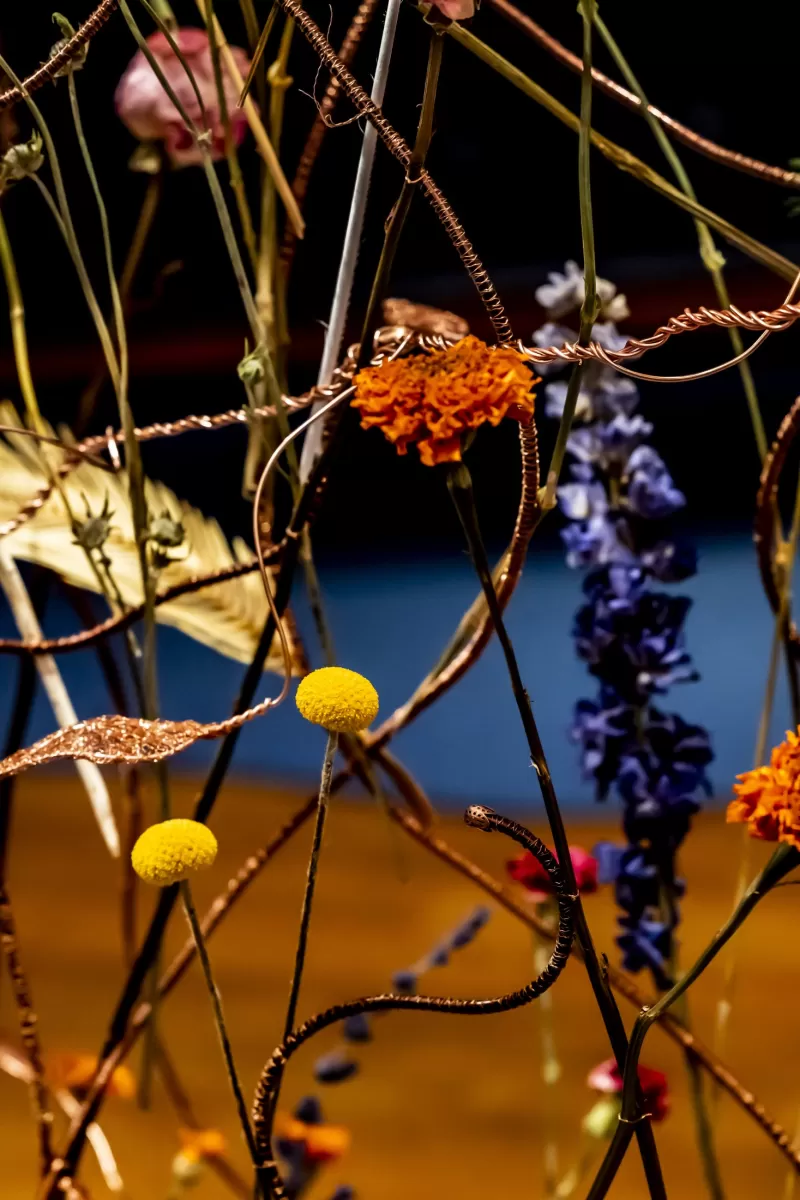
Rearranged
The impressive artwork ‘Rearranged’ measures 3.5 by 4.5 metres and is 40 cm deep. Visitors can walk around the work to view it from different angles. Hanneke explains how she came up with the idea: “It had to be something different, but you are in a palace full of paintings. So, I thought, why not a 3D painting with flowers?” A sleek, modern frame was chosen to create a deliberate contrast with the antique paintings that can be seen throughout the museum.
The flowers are mounted on a structure of iron wire wrapped with copper-coloured bullion wire. Wire lengths of 4 to 5 metres are integrated into the work. Hanneke explains: “Passionflower branches have those curling tendrils, which I recreated with thinner aluminium wire. So, they look like branches with flowers attached. The wire serves as decoration; it’s beautiful to look at, but it also helps secure the flowers.” These are innovative techniques that consumers haven’t seen before. This is what Hanneke wanted to convey with her work: the craft of floristry where the flowers truly come into their own.

Techniques for Drying Flowers
The flowers for 'Rearranged' were mostly cut from the garden and hung upside down to dry in the flower attic of Paleis ’t Loo. The most delicate varieties were placed in silica gel. With this method, even the most fragile flowers can be dried while optimally preserving their shape and colour. The sunflowers Hanneke used in her work retained their intense golden-yellow petals by carefully drying them in silica gel. Paleis ’t Loo uses a climate control system that removes moisture from the air, which is optimal for the many paintings in the palace but also ideal for preserving dried flowers.
Anyone wishing to dry flowers themselves should be particularly mindful of moisture. Even if a flower has already successfully dried, it can become soft again and decay in a damp environment. Often, a dry attic is suitable. Florists who specialise in dried flowers often use a wood stove in a small room to dry flowers quickly.
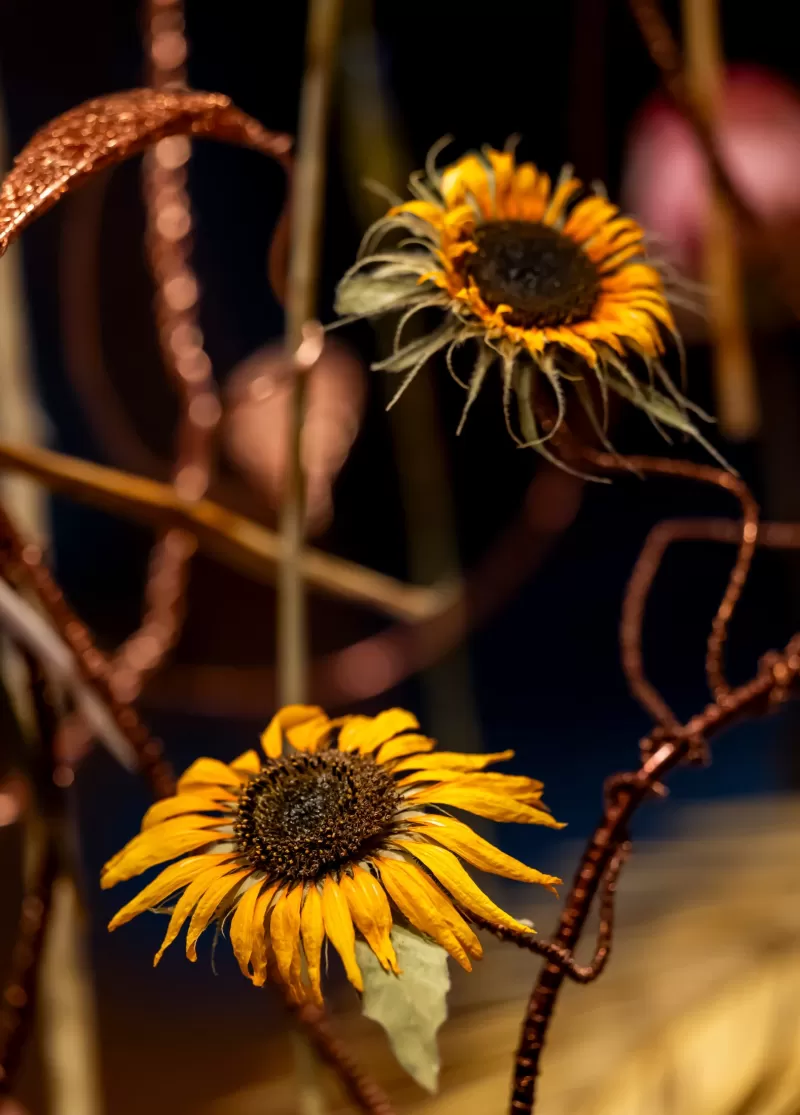
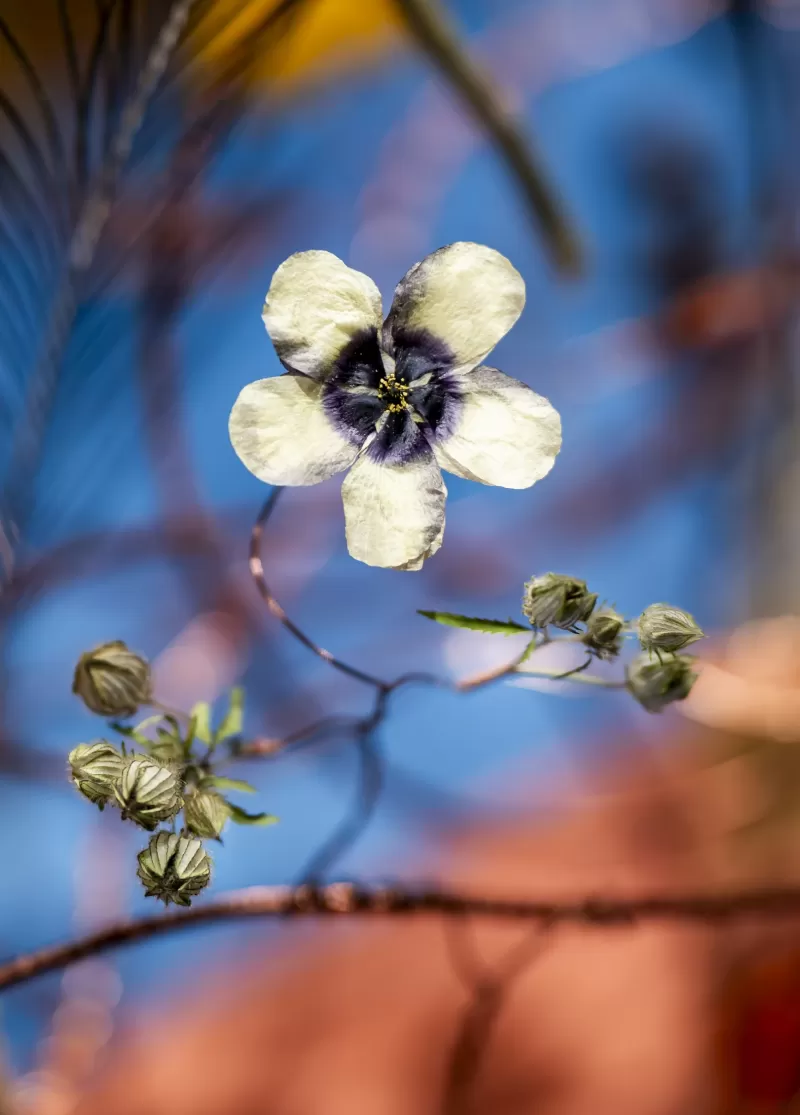
An Unforgettable Experience
Hanneke feels very honoured that her work is exhibited at Paleis ’t Loo. The organisers of ‘Bloom’ were open to her vision and ideas and they had great appreciation for the floristry craft. Hanneke says: “The location and the opening were grand. There were 600 people and lots of press. And I also got to give a speech at the opening about the work and myself. So, that’s really special. I really had a unique platform there.”
If you haven’t visited the ‘Bloom’ exhibition yet, don’t wait too long! The exhibition is open until the 1st of September 2024.

